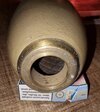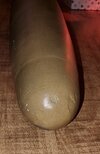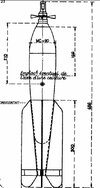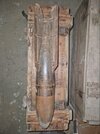pzgr40
Well-Known Member
A friend of mine has this bomb. Complete body length 430mm, dia, appr 95mm, cast bomb body, a theaded brass ring in the nose with internal thread apr. 35mm.
The tail is sheet steel and 300 mm long and 140mm dia over the wings. In the back of the cone of the tail is a 20mm hole.
What country and type is this bomb, and from what era; WW1 or WW2.
What fuze should go on top.
Does anybody have a drawing or manual.
Thanks in advance,
Regards, DJH
The tail is sheet steel and 300 mm long and 140mm dia over the wings. In the back of the cone of the tail is a 20mm hole.
What country and type is this bomb, and from what era; WW1 or WW2.
What fuze should go on top.
Does anybody have a drawing or manual.
Thanks in advance,
Regards, DJH







